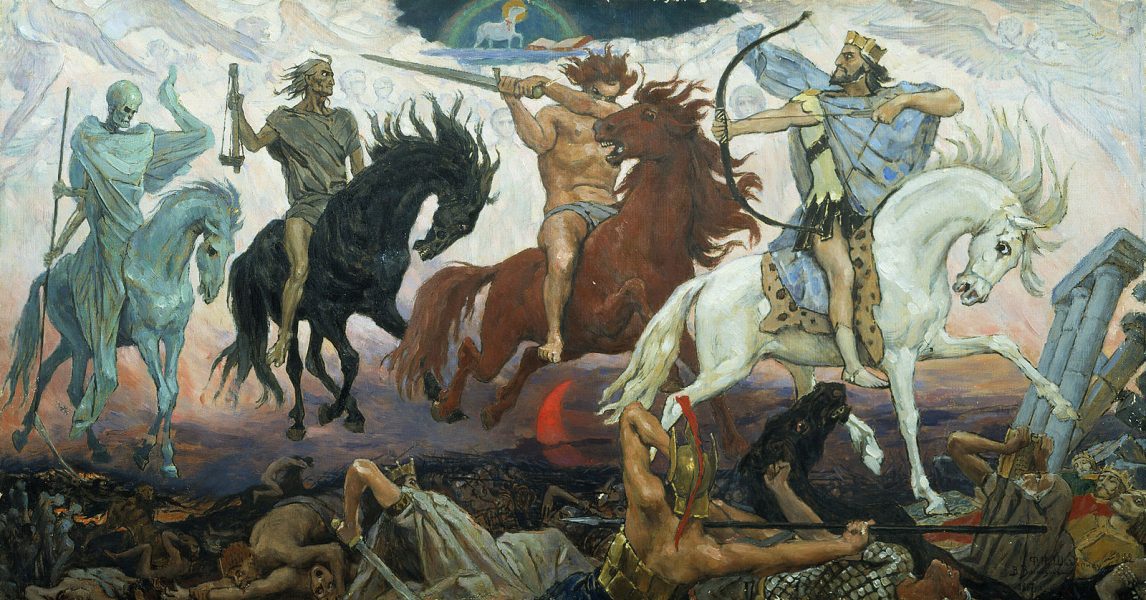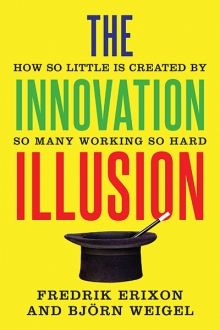The Four Horsemen of Capitalist Decline
Fredrik Erixon and Björn Weigel—
Now, however, capitalism seems to have lost its founding spirit of enterprise. Four forces that guided the economy from the 1970s assisted in reducing the scope for experimentation and innovation. They are not the Four Horsemen of the Apocalypse, nor were they all undesirable, but they changed Western capitalism. And the more commanding they have grown, the more they have persuaded the Western economy to resist change. Now, they are pushing corporate defensiveness to an extreme, insulating companies from changes that naturally come as the world economy adjusts to the end of a four-decade-long supply ride.
The four factors that have made Western capitalism dull and hidebound are gray capital, corporate managerialism, globalization, and complex regulation. These four themes are also at the center of this book – and it is they that are making the economy less prone to innovation. The past 40 years have witnessed a sharp increase in the capital and funding that is available to companies. No doubt the surge in capital chasing investments encouraged the financialization of the real economy, and a change in the structure of funding – from equity to debt. Highly leveraged finance is worrying, but the key point here is the influence of new forms of ownership capital on capitalism and corporate behavior. They changed stock markets from being a source of funding for corporations to a cash cow for savers and money managers. Companies used to retain a high proportion of their earnings in order to reinvest, but, starting in the 1960s, retained earnings have gradually dropped and investment decisions have largely moved from corporate leadership to financial markets. Western companies certainly have a lot of cash and other liquid assets, but a good proportion comes from debt and not from their own revenues, and if companies follow the trend, not much will be spent on new innovations.
In the early 1960s classic in corporate sociology, The Conduct of the Corporation, Wilbert Moore stressed the importance of retaining earnings in companies. When the control of capital in a company moves to financial markets, he argued, creditors will interfere in corporate strategy and management in a way they are not qualified to do. By contrast, companies retaining a high share of their earnings remain in power because capital is “entirely at management’s disposal without any promises or guarantees.” Much can be said about economic evolution since then, but one thing is clear: corporate America did not take that advice. According to one estimate, retained earnings in the US moved from 50–60 percent of net income in the 1960s to single-digit levels in the 2000s.
For a time, the new financing of firms was exclusively positive, leading to improved capital efficiency and new sources of financing, allowing firms to improve their access to funding. And while there are many critics of financial capitalism – lashing out against the “excessive financialization” of the real economy – most of them get it wrong. In reality, what cripples capitalist ownership is the incursion of what we call “gray capital,” squeezing out core capitalist owners and promoting “gray ownership,” or what can be described as capitalism without capitalists. Leading corporations in America and Europe now have anonymous core or controlling owners, such as investment institutions, which are simply not capable of taking ownership responsibilities. Remarkably, much of this gray ownership effectively invests on the premise that companies should go with the flow of the market rather than beating it. What these owners require is corporate managers steering a steady and predictable course, not entrepreneurs with a habit of economic renewal.
In that way, corporate managerialism took root, and Western capitalism is now a habitat for The Man in the Gray Flannel Suit, to reference Sloan Wilson’s book about the boredom of organization. While business leaders and gray owners talk about agile adaptation, disruption, and revolutionary innovation when they describe their businesses, they descend ever more into the Organization Man. Wilson’s gray flannel suit was a phenomenon of the 1950s. Those who returned from World War II had a talent for organization, and that old perception of America, a place for rugged individualism, was about to be changed for a new vision of hierarchy and bureaucracy. The Organization Man was born – and William Whyte, in his classic tract on business sociology with that name, observed a new type of economic structure: more risk-averse but better at combining various talents in specialized roles.
Business became increasingly managerial. John Kenneth Galbraith, the icon of postwar American liberalism, argued in The New Industrial State that the real “enemy of the market is not ideology but the engineer.” And he was not alone. Business management “aims to minimize uncertainty, minimize the consequences of uncertainty, or both,”concluded Robin Marris, the don of British managerialism, around the same time, in the mid-1960s. Like many others then, Galbraith and Marris, both men of the left, commended economic planning and trusted the corporate structure to manage uncertainty in a way that would allow for investment and innovation. In fact, bureaucracy as a precondition for innovation formed a central part of their support for managerial capitalism. The more complex the technology, the more bureaucracy was needed to embrace it.
The managerial school of corporate governance lost many adherents in later decades. Yet in the corporate world, managerialism never faded away, but progressively anchored itself more firmly in companies. A custodian corporate culture has been proliferating in the corporate world and it has been bad news for the culture of capitalism and innovation. Corporate managers shy away from uncertainty but turn companies into bureaucratic entities free from entrepreneurial habits. They strive to make capitalism predictable.
Globalization exacerbated the culture of managerialism. It came in two waves. The first pushed horizontal expansion and propped up business volumes based on already existing products sold in home and other markets. No doubt it ushered in strong competition; when foreign firms entered markets that previously had been home-firm dominated they often contested these markets. This wave of globalization required some innovation ingenuity too, but it was primarily defined by the organization and management of international expansion.
In the second wave – vertical globalization – companies redrew firm boundaries and built global production networks based on a high degree of supply- and value-chain fragmentation. Global companies concentrated their focus on market positions and the ability to influence, if not control, their end-customer market. They grew defensive about their incumbency advantages and fearful of radical innovation that contested their markets. Barriers to market entry went up as market concentration increased and companies accelerated their specialization, making it more difficult for incumbents to be ousted through innovation. The soul and rhythm of competition changed.
The managerialist culture united corporate managers and regulators. Like managers, regulators have responded to the increasingly complex world by making regulations complex. As a result, regulations today cause a good deal of uncertainty about what companies and innovators can or cannot do. Two decades of economic liberalization did not change that trend. While economic regulation became less restrictive as markets opened up, other forms of regulation interfered with innovation. Stability and predictability have shaped many of the new non-economic regulations that have spread since the 1970s. Together with all economic regulations that have grown more restrictive again over the past 15 years, these regulations have created a permission-based regulatory culture of innovation and economic renewal.
The four factors reinforced the bureaucratic impulses of Western societies. Instinctively defensive, operating under a compliance mentality supported by their financiers and government regulations, companies lost the entrepreneurial appetite for transforming markets with big innovation. As the managerialist disposition for predictability and preservation seized the corporate world, capitalism lost its orientation. It wrecked its compass for economic dynamism and competition that contests markets. Now capitalism is challenged, not from outside competition, but by the four horsemen of capitalist decline. The existential challenge of capitalism in the twenty-first century is a growing inability to foster contestable innovation and entrepreneurial competition. The importance can hardly be exaggerated: reversing capitalism’s decline is pivotal to stopping the growing populist unrest in the West. Capitalism is no longer what most people think it is.
From The Innovation Illusion: How So Little Is Created by So Many Working So Hard by Fredrik Erixon and Björn Weigel, published by Yale University Press in 2017. Reproduced with permission.
Fredrik Erixon is the director and cofounder of the European Centre for International Political Economy (ECIPE). Björn Weigel is a business strategist and investor/entrepreneur with extensive experience in working with innovative companies and start-ups. They both live in Sweden.
Further Reading:



























